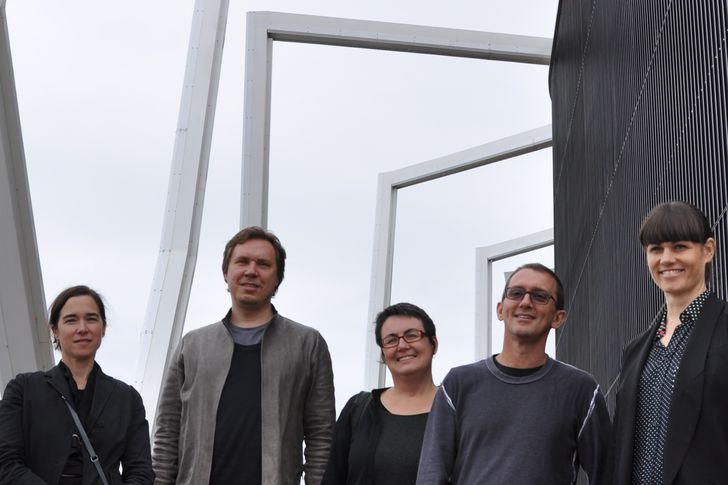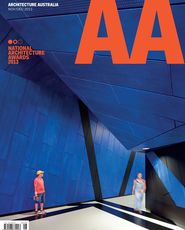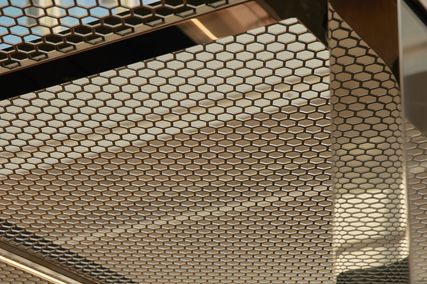It was an absolute honour to chair the jury for this year’s National Architecture Awards. The privilege lay in the sharing of intense and memorable experiences with fellow jurors, in the intimate access to so many outstanding buildings and spaces, and in the engagement with such a diverse representation of excellent Australian architects. I think it’s the latter point that is ultimately so exciting. We saw a lot of wonderful architecture and we came away with the certainty that more is to follow.
To be presented with 166 award-winning projects from the states and territories was a daunting beginning. Our starting position was that our chapter-based colleagues had deliberated with care in giving their awards, and we took every contender seriously. We reluctantly narrowed the field to fifty-five awards, feeling both sure of our choices and certain that we were missing some really great work. I retain this feeling and acknowledge the tension that comes with the task of choosing the best from a field of the best. I also note the incremental increase in entries and visited projects that occurs each year – not just a sign of more architects doing more work, but a sign of more fabulous architecture being impossible to ignore.
Visiting projects, we were consistently stunned, surprised and inspired, lifted from sometimes travel-weary moments by the visceral impact of great places. Innumerable times, we would begin a visit in quiet anticipation and find our energy levels rising, our conversation lifting and a simple, irrepressible happiness emerging by the time we departed. Reanalysis, re-reading and checking of facts would follow, but it was coming into contact with great places that reliably moved and invigorated us.

The 2013 National Architecture Awards jury (L—R): Shelley Penn (chair), Ben Hewett, Justine Clark, Richard Hassell and Hannah Tribe on the rooftop of One One One Eagle Street, Brisbane.
What was also wonderful was the diversity of projects, architects and clients. There was no formula, no style, no scale, no location that owned great architecture. It was happening everywhere, at all scales, all budgets. It was the product of a multitude of architectural preoccupations and backgrounds. It was responsive to vastly varied climates, topographies, urban and natural contexts; and to diverse clients – from the very humble to the very proud – all of whom shared the ability to envisage alternatives and to invest faith in their architect and the value of excellent design.
We were thrilled to see so many buildings and places that were engaging with social impacts beyond their immediate brief, offering something significant to society at a higher level – architecture which is not merely responsible, but which is generous. In many of the projects we saw, architects were working proactively and collaboratively to seriously redefine and refine project briefs to identify how best to meet the client’s ambitions and needs, and delivering way beyond expectations.
In the public, commercial, interior and urban projects, at all scales, we witnessed these approaches again and again. Projects in all of these categories, and many others, extended well beyond base requirements to make meaningful contributions to the public realm. These were sometimes modest, sometimes grand – each of them offering a legacy of positive urban spaces, connections and approaches that will influence how their cities function and are perceived.
A series of strikingly experimental houses, in both new and alterations projects, responded with enormous innovation to opportunities presented by subtropical and tropical climates to posit different modes of living. Radical and gutsy were words that recurred, in respectful admiration for both architecture and client. These words also applied to small projects, none of which was small in impact, and to heritage projects, which offered a mix of awe-inspiring restoration and thrilling intervention.
There were several institutional buildings for research and education, many of them focused on generating strong collaborations between disciplines, and between research, teaching and practice, especially in the fields of science and medicine. It was inspiring to see the role architecture plays in creating new environments for groundbreaking research.
The integration of environmental sustainability as a core requirement of all Institute awards program award winners has come to fruition this year, and it was wonderful to see pervasive and sophisticated approaches to sustainability throughout all projects. A deeper and broader demonstration of sustainable approaches to architecture was revealed in the creation of places generous in their response to ecology, to culture and to society.
On behalf of the 2013 jury – Richard Hassell, Ben Hewett, Justine Clark, Hannah Tribe and myself – I congratulate each of the award winners, and thank you for your important contribution to architecture in Australia.















